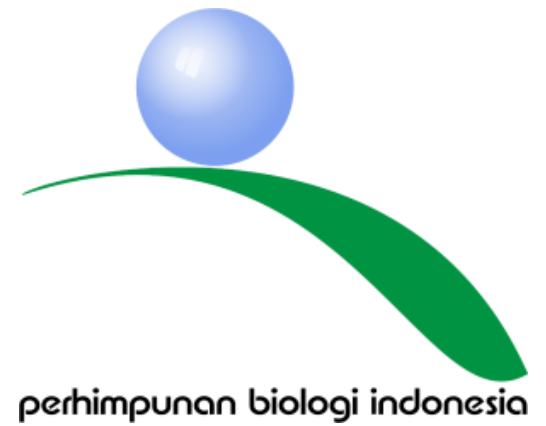IN VITRO INDUCTION OF CALLUS ON AGLAONEMA "BUTTERFLY" LEAVES WITH A COMBINATION OF 2,4-D AND BAP
DOI:
https://doi.org/10.21831/ijobi.v2i1.619Abstract
This research aims to determine the effect of variations and the concentration level of 2,4-D in a medium containing BAP which gives the best for callus formation on Aglaonema Butterfly in vitro. This research is an experimental study using 2,4-D (ppm; 0.5 ppm; 1 ppm; 2 ppm; 4 ppm) and 1.2 ppm BAP. Explants were taken from young leaves of the 2nd and 3rd Aglaonema Butterfly from the shoots, with the size of the explants being 1 x 2 cm. The parameters observed were callus emergence time, the percentage of explants forming callus, the average callus size, the rate of surviving explants, and the level of explant browning. The variation of 2,4-D in a medium containing BAP affected the callus emergence time, the percentage of explants forming callus, and the average of Aglaonema Butterfly callus size. The best treatment was at a concentration 2 ppm 2,4-D + 1.2 ppm BAP concentration at 4 weeks after planting, with 50% of explants forming callus, the average callus size was 0.82 mm, live explants were 87.5%, and the lowest browning rates.
Downloads
References
Asra, R., Samarlina, RA, & Silalahi, M. (2020). Plant Hormones. Jakarta: UKI Press.
Aziz, MM, Evi, R., & Yuni, SR (2014). Callus Induction of Iles-Iles Tubers (Amorphophallus muelleri) with 2,4-D and BAP Concentrations in Vitro. Journal of Biology, 3, 109–114.
Damayanti, F., Murdaningsih HK, T. Herawati, & JS Darsa. (2005). Response of Stem Explants of Three Lily Cultivars to the Combination of BA with Several Levels of 2,4-D on MS Medium. Indonesian Breeding Journal, 16, 60-66.
Esau, K. (1960). Anatomy of Seed Plants. New York: John Wiley & Sons Inc.
Gaspar, T., Kevers, C., Penel, C., Greppin, H., Reid, D. A., & Thorpe, T. A. (1996). Review: Plant Hormones and Plant Growth Regulators in Plant Tissue Culture. Plant Biol Dev, 32, 272-289.
George, EF & PD Sherrington. (1984). Plant Propagation by Tissue Culture. London: Cambridge University Press.
Khaniyah, S., Habibah NA, & Sumadi. (2012). Callus Growth of Dewa Leaves [Gynura procumbens (Lour) Merr.] with a Combination of 2,4-Dichlorophenoxyacetic Acid and Kinetin in Vitro. Journal of Biosciences, 4, 89-105.
Lestari, EG (2011). The Role of Growth Regulators in Plant Propagation through Tissue Culture. AgroBiogen Journal, 7, 63-68.
Ozygit II. (2008). Phenolic Changes during In Vitro Organogenesis of Cotton (Gossypium hirsutum L.) Shoot Tips. Afr.J. Biotechno, 7, 1145-1150.
Raghavan, V. (1997). Molecular Embryology of Flowering Plants. New York: Cambridge Univ Press.
Siti, DH Hoesen, Witjaksono, & LA Sukamto. (2008). Callus Induction and Organogenesis of In Vitro Culture of Dendrobium lineale Rolfe. J. Biology News, 9, 333-342.
Wahyuni, DK, Prasetyo, D., & Hariyanto, S. (2014). Development of Aglaonema sp Leaf Culture. with combination treatment of growth regulators NAA and 2,4-D with BAP. Bioslogos Journal, 4, 10-16.
Wilkins. (1970). The Physiology of Plant Growth and Development. San Francisco: Mc Graw-Hill.
Yelnititis. (2012). Crumb Callus Formation from Ramin Leaf Explants (Gonystylus bancanus (Miq) Kurz.). Journal of Forest Plant Breeding, 6, 181-194.
Zhong, L., Liu, E., Yang, C., Jin, S., Diao, Y., & Hu, Z. (2017). High Embryogenic Ability and Regeneration from Floral Axis Of Amorphophallus Konjac (Araceae). Open Life Sci, 12, 34–41.
Downloads
Published
Issue
Section
License
Copyright (c) 2024 Indonesian Journal of Bioscience (IJOBI)

This work is licensed under a Creative Commons Attribution-NonCommercial-ShareAlike 4.0 International License.




















